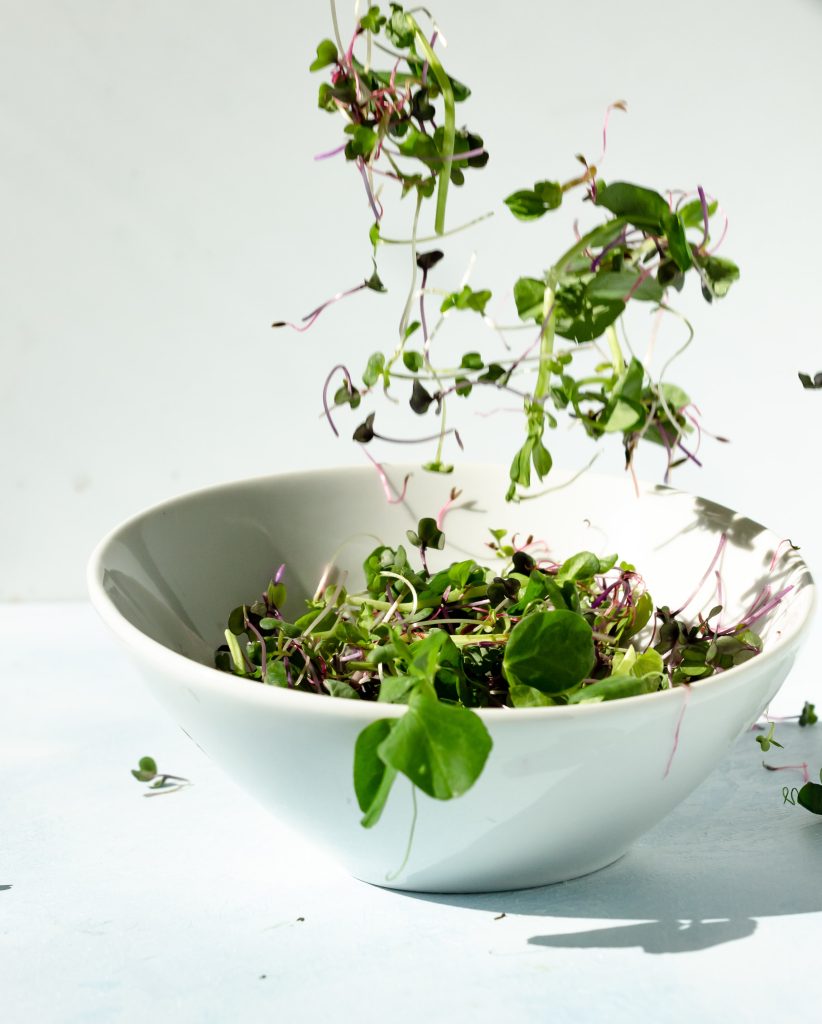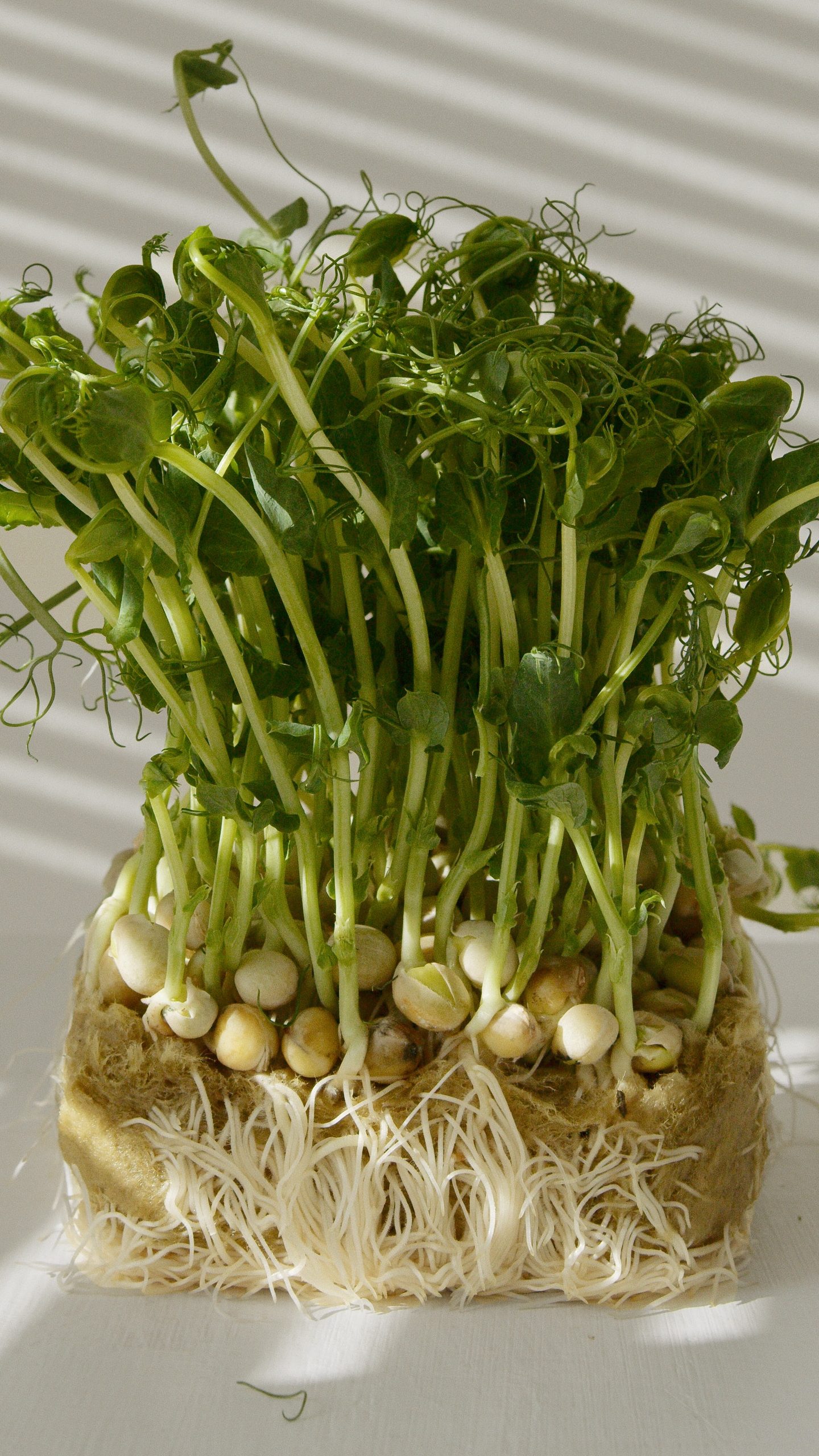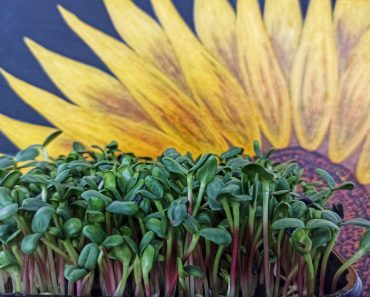When it comes to boosting the nutritional value of your meals, both microgreens and sprouts have become popular choices for health-conscious individuals. But what are the differences between these two superfoods, and which one should you choose to maximize the health benefits? In this blog post, we’ll dive into the world of microgreens vs sprouts. Explore their unique characteristics, and help you make an informed decision for your health and wellness journey.
What Are Microgreens?
Microgreens are tender, young plant shoots harvested a few weeks after germination, typically 1-3 inches tall, boasting vibrant colors and intense flavors. They are grown from various plant seeds, including sunflower, radish, pea, kale, and arugula. Microgreens are nutrient-dense, rich in vitamins, minerals, and antioxidants, which makes them a healthy addition to meals.

What Are Sprouts?
Growers typically harvest sprouts after just a few days of growth, once the shoot has reached a length of between 1/4 and 1 inch. Sprouts are young plants that emerge from germinated seeds and are cultivated in water. They consist of the seed, root, and stem.

Commonly sprouted seeds include alfalfa, mung beans, lentils, and radishes. Similar to microgreens, sprouts are rich in essential nutrients and can make a healthy addition to your diet.
The Differences Between Microgreens and Sprouts
- Growing Process: One of the most significant differences between microgreens and sprouts is their growing process. Microgreens are grown in soil or a soilless medium and require sunlight for photosynthesis. Sprouts are germinated in water and don’t require sunlight, as they are harvested before they develop leaves.
- Harvesting Stage: Growers typically wait until the plants have developed their first set of true leaves. Sprouts are harvested as soon as they germinate, which typically occurs just a few days after soaking the seeds in water.
- Taste and Texture: Microgreens have a more intense flavor and a slightly crunchy texture, whereas sprouts have a milder taste and a softer, more delicate texture.
- Food Safety: Sprouts are more susceptible to bacterial contamination, such as Salmonella or E. coli, because they grow in a moist environment. Microgreens are considered safer to eat because growers typically cultivate them in well-draining soil or a soilless medium.
Nutritional Values
Both microgreens and sprouts are known for their high nutritional value. However, studies have shown that microgreens often contain higher concentrations of vitamins, minerals, and antioxidants compared to sprouts and their mature counterparts. For example, broccoli microgreens have been found to contain up to 40 times more nutrients than mature broccoli .
Sprouts, while still nutritious, generally have lower nutrient concentrations than microgreens. However, sprouting seeds can increase the bioavailability of certain nutrients, such as vitamin C, making them easier for the body to absorb.
Benefits of Microgreens and Sprouts
Both microgreens and sprouts offer a range of health benefits, thanks to their high nutrient content. Some of the key benefits include:
- Improved Immunity: The high levels of vitamins, minerals, and antioxidants found in microgreens and sprouts can help support a healthy immune system. Which can protect against illness and infection.
- Heart Health: Rich in heart-healthy nutrients. Such as fiber and antioxidants. Which can help lower cholesterol levels and reduce the risk of cardiovascular disease.
- Digestive Health: The fiber content in microgreens and sprouts can aid digestion by promoting regular bowel movements and supporting a healthy gut microbiome.
- Weight Management: Both microgreens and sprouts are low in calories and high in nutrients, making them an excellent choice for those looking to maintain a healthy weight or lose excess pounds.
- Anticancer Properties: Some studies have suggested that the high levels of antioxidants and other bioactive compounds found in microgreens and sprouts can help protect against certain types of cancer.
Juicing Microgreens and Sprouts
If you’re already a fan of juicing, incorporating microgreens and sprouts into your juices can be an excellent way to boost their nutritional value. I’ve been super powering my green juice with the recipe below.
Green Power Juice: Combine a handful of microgreens (such as kale or spinach) with cucumber, celery, green apple, and lemon for a refreshing and nutrient-packed green juice. Click here to find out some tips on how to include juicing into your diet.
Remember to wash microgreens and sprouts thoroughly before juicing, and consider purchasing organic or growing your own to minimize pesticide exposure.
TLDR;
In conclusion, incorporating superfoods such as microgreens or sprouts into your diet can greatly enhance your overall health and wellness. Take the next step towards a healthier lifestyle with dailyeatvegetables.com. Explore our unique and informative posts for tips on health-boosting foods, delicious recipes, the latest nutrition trends, and how to make healthier choices every day. Join our community of health enthusiasts and start reaping the benefits today.

